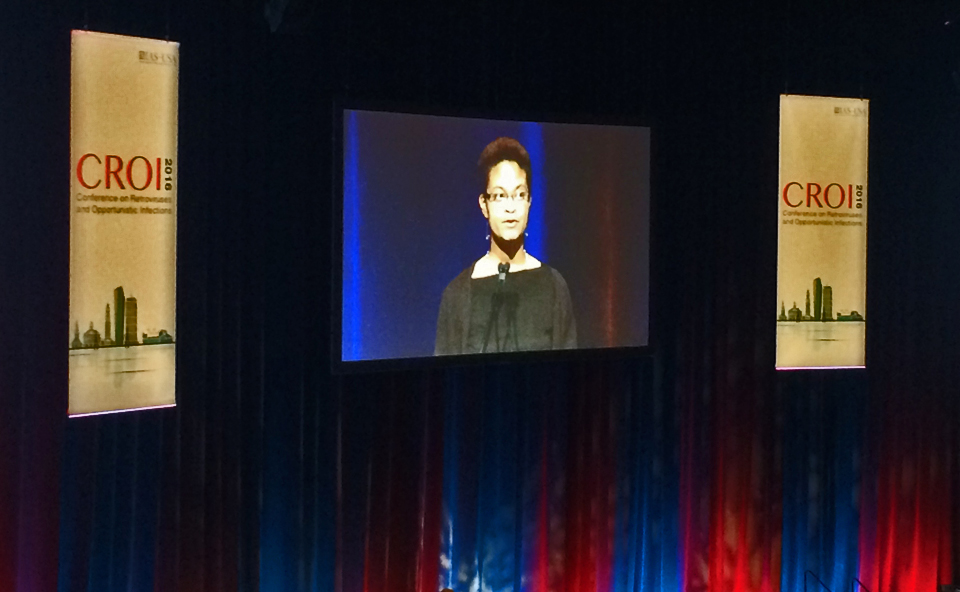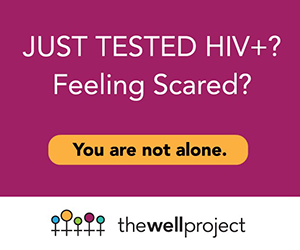
Jennifer Johnsen, MD, MPH, Managing Editor
From February 22 to February 26, 2016, approximately 4,000 scientists, clinicians, and HIV advocates from 96 countries gathered in Boston for the Conference on Retroviruses and Opportunistic Infections (CROI). This conference serves as a premier bridge between the basic and clinical sciences, and an opportunity for researchers to share the most up-to-date developments in the field of HIV, hepatitis C (HCV), and related viruses.
Highlights of the conference are presented below, by topic:
- Treatment advances
- The prevention toolbox
- Cancers
- HIV/hepatitis C co-infection
- HIV and the brain
- Reaching treatment goals
Treatment advances
In 2015, there were an estimated 15.8 million people living with HIV on antiretroviral treatment. Over the past several years, especially with the increased use of integrase inhibitors, clinicians have seen better viral suppression rates; people are staying on treatment longer without having to change agents either because of side effects or drug resistance. Nevertheless, there are still welcome improvements on the horizon.
Injectable treatment
The LATTE-2 study showed that a long-acting injectable combination of cabotegravir (an integrase inhibitor) and rilpivarine (an NNRTI; brand name: Edurant) was highly effective – 94 or 95 percent after six months – in achieving and maintaining viral suppression in people living with HIV who had never before received HIV treatment. Long-acting injectable HIV treatment may be an attractive alternative for those who have trouble being adherent to daily oral medications, especially when those medications need to be taken for a lifetime. The downside, however, is that once these injections are given, the drugs cannot be easily withdrawn from the body if someone experiences problems.
Injections were delivered into the muscles of the buttocks every four or eight weeks. The most common side effect was injection site reactions (pain, swelling), which occurred in 90 percent of those receiving injections, but which were most often described as mild. The most common non-injection side effects were fever, tiredness, and flu-like illness.
Most participants reported being quite satisfied with their injection-based treatment. This trial is ongoing and will continue until participants have received injections for two years. It is important to note that only nine percent of study participants were women, and eight out of ten were white.
Tenofovir: TDF and TAF
Tenofovir is an HIV drug that comes in two forms: TDF (tenofovir disoproxil fumarate) and TAF (tenofovir alafenamide). TDF is the tenofovir also known by the brand name Viread and found in other combination drugs such as Truvada. Previous studies have shown that treatment with TDF can lead to a reduction in kidney function and bone loss. Treatment with TAF, which can be given at lower doses than TDF while achieving the same level of HIV suppression, appears to produce less bone loss and less reduction in kidney function.
A study of over 12,000 Europeans living with HIV found that treatment with TDF increases not just bone loss, but the risk of actual bone fracture in adults. This is an especially important consideration for women, who often experience bone loss naturally after menopause. The risk of fracture did not increase with increasing time on TDF, which matches our understanding that most of the loss of bone loss associated with taking tenofovir disoproxil occurs early in treatment.
Researchers presented promising results from a comparison of HIV combination treatment with TAF and combination treatment with TDF. In virologically-suppressed study participants who switched from TDF-containing regimens to TAF-containing regimens, 93 percent continued to have undetectable viral loads while their kidney and bone problems improved.
In a different approach to addressing the bone loss that can occur with tenofovir (TDF) treatment, scientists gave zoledronic acid, currently used for treatment of osteoporosis, to people living with HIV and beginning their first year of treatment. Study participants received atazanavir boosted with ritonavir (Reyataz) plus tenofovir disoproxil/ emtricitabine (Truvada). Researchers reported a promising 74 percent reduction in bone loss in the first three months – an effect that lasted through the 12-month study period.
Other ideas in the pipeline
- Injectable antibodies: these would likely be safe, well-tolerated, and given as a single long-acting shot; they would be complementary to existing HIV treatment, as they have different mechanisms of action and would potentially cover different strains of HIV
- HIV drugs with different mechanisms of action:
- EFdA: a nucleoside reverse transcriptase translocator inhibitor (NRTTI); this has the potential for once a week dosing
- BMS-626529: an attachment inhibitor
- BMS-955976: a maturation inhibitor
The prevention toolbox
Vaginal ring
One of the largest announcements at this year’s CROI involved results from two studies that looked at the effectiveness of an intravaginal dapivirine-containing ring in preventing HIV infection. The two studies – the ASPIRE study and The Ring Study – enrolled over 4500 HIV-negative women in South Africa, Uganda, Malawi, and Zimbabwe ages 18 to 45 years. They shared the same design, which assigned half of participants to receive a ring containing the study drug, a non-nucleoside reverse transcriptase inhibitor (NNRTI), and half to receive a ring containing no dapivirine (the placebo). The rings were inserted into the vagina every month for two years.
Among ASPIRE participants, researchers found a 27 percent reduction in HIV infection. This was not as high as had been hoped. However, researchers noted that two of their study sites had trouble recruiting and monitoring women; when data from these sites were excluded, the ring reduced infections by 37 percent.
Among women over 21 years of age the ring reduced HIV infection by 56 percent, whereas in women 21 years old or younger, the ring appeared not to convey any benefit. This difference in effectiveness in age groups corresponds to adherence. Younger women were less adherent in using the ring, and consequently saw less protective benefit. Interestingly, adherence increased over time, suggesting that women may have needed some time to become familiar with the new technology.
The Ring Study showed that the dapivirine ring reduced HIV infection by 31 percent. Like the ASPIRE study, its results improved based on age and adherence, with 37 percent protection among women over 21.
It is clear that getting HIV prevention technologies to young women – those most often at risk – is vitally important. Researchers will be looking to understand why there are such differences in adherence and effectiveness among the different age groups, at the same time that they move forward with follow-up open-label studies. It may be that, as in the studies of PrEP’s effectiveness, participants will be more adherent and therefore more protected when they know they are using the active drug.
It is important to remember that women will likely need multiple options for HIV prevention, because one size never fits all (just like with birth control methods). In this regard, the dapivirine ring is an encouraging new tool in the prevention toolbox.
PrEP (pre-exposure prophylaxis)
The Centers for Disease Control and Prevention (CDC) estimates that meeting the testing, treatment, and PrEP targets established by the National HIV/AIDS Strategy could prevent 185,000 new HIV infections in the US by 2020. If testing and treatment rates remained the same over the next five years, researchers predict expanded PrEP coverage alone could reduce new infections by 20 percent.
Researchers from two major PrEP studies – iPrEx and the PrEP Demo Project – reported that people taking tenofovir disoproxil/emtricitabine (Truvada) can experience modest reductions in kidney function. While Truvada is safe and well-tolerated in most people who use it for PrEP, those who are older and/or who already have reduced kidney function when they begin using Truvada may benefit from more frequent monitoring. It is important to note that both the iPrEx and PrEP Demo studies included only transgender women and men who have sex with men.
Since the use of Truvada for PrEP has been connected to bone loss, scientists also looked at iPrEX study data to see if bone loss was reversible study participants who stopped using Truvada. The data showed that, six months after stopping PrEP, participants’ bone mineral density returned to pre-PrEP levels. However, because this study was conducted among a group of predominantly young men, it may not serve as a good predictor of the reversibility of bone loss in women who take Truvada as PrEP.
For the same reasons that researchers are examining TAF as an alternative to TDF in HIV treatment (see previous section on treatment advances), they tested TAF for use as PrEP. In a study in monkeys, scientists demonstrated that the combination of TAF/emtricitabine successfully prevented rectal HIV. This provides ‘proof-of-concept’ that can now be tested in humans.
In the ÉCLAIR study, researchers evaluated a long-acting injectable form of cabotegravir (an integrase inhibitor) in HIV-negative men at low risk for HIV. This was a phase IIa trial looking at safety, tolerability, and pharmacokinetics (how medications behave in and move through the body). Participants were given three shots in the buttocks – one every three months. Their satisfaction with the injectable treatment was high, and participants reported preferring the shots to once daily oral PrEP. Based on the pharmacokinetics, an eight-week dosing schedule may be more appropriate. Nevertheless, the results are encouraging, as long-acting injectables may reduce the burden of adherence and improve HIV prevention.
Cancers
Last year, the START study conclusively demonstrated that starting HIV treatment immediately after diagnosis yielded the best health results for people living with HIV. This year, scientists presented the results of further analysis of the START data. Those who started treatment earlier (CD4 > 500) were much less likely to develop HIV-related cancers than those who began treatment later. The most common HIV-related cancers were cervical and anal cancers (often resulting from HPV infection), and Kaposi sarcoma (often resulting from infection with human herpes virus 8, or HHV8).
Since women living with HIV are more likely to become and remain infected with the human papilloma virus (HPV), a primary cause of cervical cancer, researchers looked at the burden of cervical cancer across the globe. They found that, even when women were taking HIV treatment, those who were living in Latin America and Southern Africa had much higher rates of invasive cervical cancer than women from North America and Europe. Researchers suggested that higher rates of HPV and/or less access to cervical cancer screening could explain these regional differences.
Scientists also looked at whether more frequent cervical cancer screening is warranted among women living with HIV, as current guidelines suggest. They found that women living with HIV have a two-fold higher risk of cervical cancer than HIV-negative women, but only when they had CD4 counts less than 500. In conclusion, they suggested that intensive cervical cancer screening may be needed only for particular subsets of women living with HIV – namely, those with lower CD4 counts.
HIV/hepatitis C co-infection
Recent years have seen an explosion of direct-acting antivirals for the treatment of hepatitis C (HCV). At this year’s CROI, another interferon-free combination demonstrated that it was effective in curing HCV among people co-infected with HIV and HCV. Just six weeks of treatment with of sofosbuvir and ledipasvir (brand name: Harvoni) provided 77 percent of participants with a sustained virologic response (defined as cured) 12 weeks after treatment stopped. It is important to note that this was a fairly small study conducted among all men who were overwhelmingly white. The regimen was tested against genotypes 1 and 4. The treatment was more effective in people with lower HCV viral loads, and the primary side effects were headache and tiredness.
HIV and the brain
Due to advances in HIV treatment, HIV-associated neurocognitive disorder (HAND) and AIDS-related dementia are becoming much more rare. As UNAIDS reports, however, the proportion of older adults living with HIV continues to increase in all areas of the world; as a result, neurological conditions will continue to be important. In a symposium entitled “A Beautiful Mind: Keeping It,” scientists reviewed new developments affecting the central nervous system (CNS; brain and spinal cord) of people living with HIV. These included (1) new markers in the blood that measure brain damage and causes of neurological impairment (including problems with thinking, mood, and movement), and (2) a greater understanding of the levels of effectiveness of different HIV drugs within the CNS. Clinicians anticipate being able to use these markers, as well as their enhanced understanding of which HIV drugs work better in the CNS, to treat people with HIV-related neurological difficulties in a more targeted and therefore more effective manner.
Reaching treatment goals
In a symposium entitled “Getting to 90-90-90,” researchers presented the results from several countries’ programs to roll out and scale up efforts to end the HIV epidemic. 90-90-90 is a target set by UNAIDS for 2020. If the target is met, then 90 percent of people living with HIV would know their status, and 90 percent of those would be on HIV treatment, and 90 percent of those would be virally suppressed. As a result, the rate of new HIV infections would drop significantly and we would be one important step closer to ending the epidemic.
Botswana, a resource-constrained country in sub-Saharan Africa, is leading the way in providing testing and treatment in a region with high HIV prevalence. A population-based sample showed that 82 percent of people living with HIV knew their status, 86 percent of people diagnosed with HIV were on HIV treatment, and 95 percent of those people taking HIV treatment had an undetectable viral load. Overall, 67 percent of people living with HIV were virally suppressed (RNA <400 copies/mL).
Preliminary results from the first round of a home-based test and treat model of HIV care in communities in Zambia and South Africa were also very encouraging that 90-90-90 goals are achievable. The PopART study (HPTN 071) demonstrated that home-based care could reduce the number of untreated people known to be living with HIV by 43 percent. After the first 12 months, seven out of ten people living with HIV were taking HIV drugs, regardless of their CD4 count.
In Uganda, where uptake of HIV treatment has been sub-optimal, researchers tested a point-of-care model that proved quite successful. Whereas in standard care less than 40 percent of people living with HIV started treatment within two weeks of becoming eligible, with point-of-care service that proportion more than doubled to 80 percent.
Researchers in South Africa showed that offering HIV treatment on the day of diagnosis improves treatment uptake and decreases time to viral suppression. The RapIT trial reported that same-day treatment for adults in public sector clinics increased HIV treatment 36 percent and viral suppression by 26 percent.
Malawi, another resource-constrained country in sub-Saharan Africa, showed great progress in reducing the vertical transmission of HIV, also known as mother-to-child transmission (MTCT). Researchers reported that adopting Option B+, a World Health Organization guideline recommending lifelong HIV treatment to all pregnant and breastfeeding women regardless of their CD4 count, has decreased the vertical transmission rate to approximately four in every 100 births. This is a very low rate, much like those seen in resource-rich countries.
Where are the men?
The HIV epidemic disproportionately affects women and girls in sub-Saharan Africa. Yet, as Helen Ayles pointed out during a symposium entitled “Reaching 90-90-90 and Beyond,” it is important that we not leave men out of the equation. Instead, she argued, we should aim to provide effective services to both sexes in such a way that everyone’s needs are met. HIV services tend to be less accessible to men and often focus on maternal and child health. When coupled with gender-based beliefs (e.g., real men don’t get sick, HIV testing is for expectant mothers), this can lead to large numbers of men not getting the testing and treatment they need. If we really want to reduce the risk of HIV infection for women and girls, it is crucial that we take men’s needs into account, for only by bringing treatment to all who need it will we be able to end the HIV pandemic.




